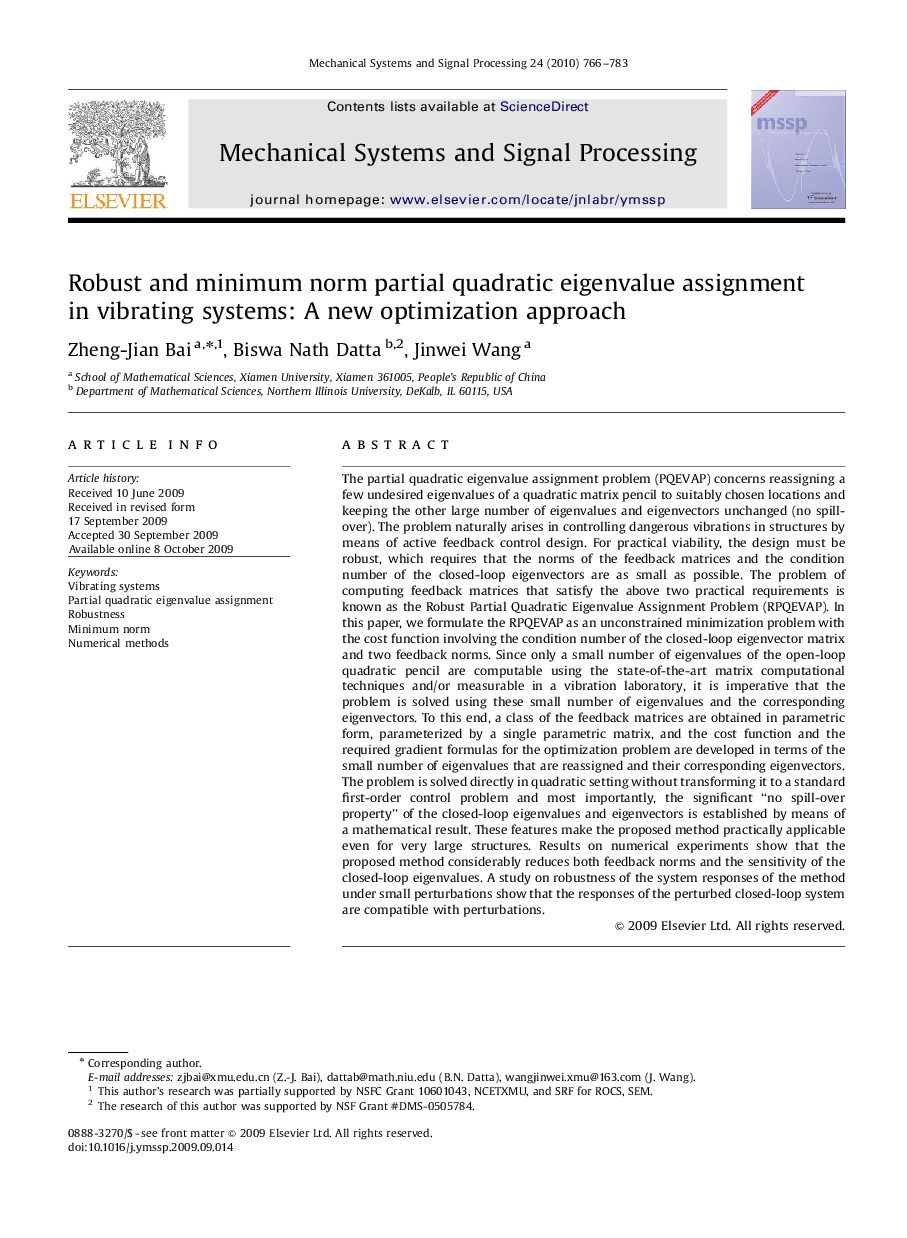| کد مقاله | کد نشریه | سال انتشار | مقاله انگلیسی | نسخه تمام متن |
|---|---|---|---|---|
| 565662 | 875802 | 2010 | 18 صفحه PDF | دانلود رایگان |

The partial quadratic eigenvalue assignment problem (PQEVAP) concerns reassigning a few undesired eigenvalues of a quadratic matrix pencil to suitably chosen locations and keeping the other large number of eigenvalues and eigenvectors unchanged (no spill-over). The problem naturally arises in controlling dangerous vibrations in structures by means of active feedback control design. For practical viability, the design must be robust, which requires that the norms of the feedback matrices and the condition number of the closed-loop eigenvectors are as small as possible. The problem of computing feedback matrices that satisfy the above two practical requirements is known as the Robust Partial Quadratic Eigenvalue Assignment Problem (RPQEVAP). In this paper, we formulate the RPQEVAP as an unconstrained minimization problem with the cost function involving the condition number of the closed-loop eigenvector matrix and two feedback norms. Since only a small number of eigenvalues of the open-loop quadratic pencil are computable using the state-of-the-art matrix computational techniques and/or measurable in a vibration laboratory, it is imperative that the problem is solved using these small number of eigenvalues and the corresponding eigenvectors. To this end, a class of the feedback matrices are obtained in parametric form, parameterized by a single parametric matrix, and the cost function and the required gradient formulas for the optimization problem are developed in terms of the small number of eigenvalues that are reassigned and their corresponding eigenvectors. The problem is solved directly in quadratic setting without transforming it to a standard first-order control problem and most importantly, the significant “no spill-over property” of the closed-loop eigenvalues and eigenvectors is established by means of a mathematical result. These features make the proposed method practically applicable even for very large structures. Results on numerical experiments show that the proposed method considerably reduces both feedback norms and the sensitivity of the closed-loop eigenvalues. A study on robustness of the system responses of the method under small perturbations show that the responses of the perturbed closed-loop system are compatible with perturbations.
Journal: Mechanical Systems and Signal Processing - Volume 24, Issue 3, April 2010, Pages 766–783